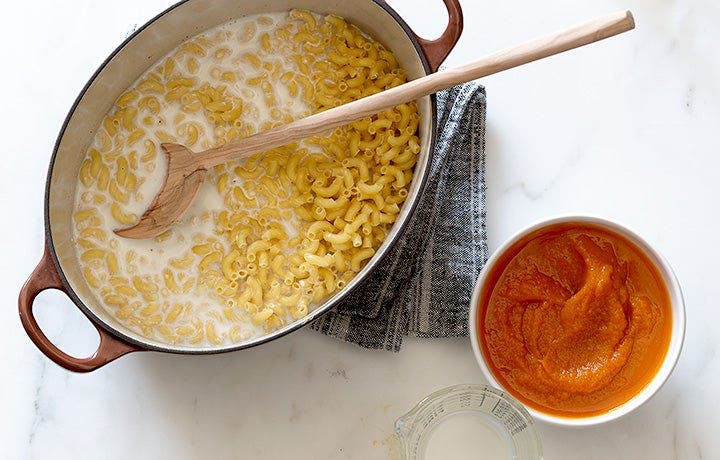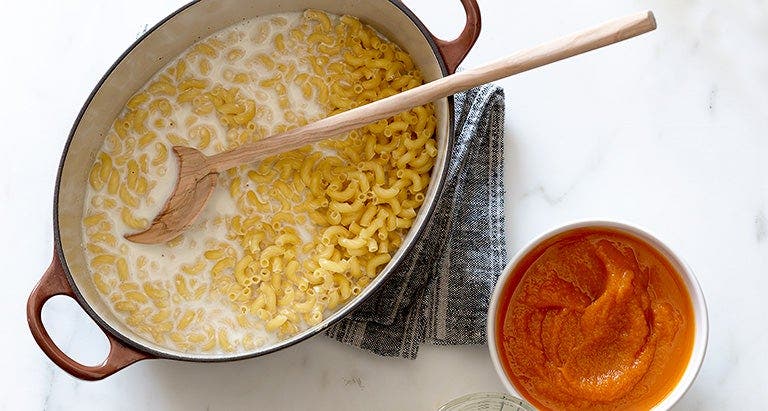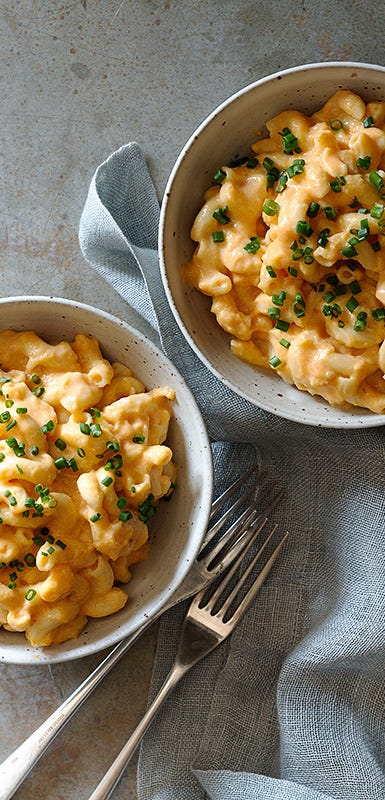How to make a complete pasta meal in one pot


Imagine that you could streamline dinner—and save on cleanup time—by combining pasta, vegetables, seasonings, and liquid all in a single pot. By the time the pasta is perfectly al dente, the liquid has thickened into a creamy sauce. It’s not just a fantasy. Not only does this method work, it serves up your pasta enveloped in a lush, velvety coating that feels decadent without extra oil, butter, or cream. The secret: the starchy pasta-cooking water that forms the base of the sauce.
Use our mix-and-match guidelines to make a masterpiece one-pot pasta, or try this technique with our stovetop mac and cheese first .
Picking the perfect pot
The wrong cooking pot can ruin a dish. The right size allows optimal absorption and evaporation of liquid so the pasta is done just as the sauce reaches the ideal texture. A wide pot works best. Choose either a 12-inch straight-sided sauté pan or a large Dutch oven or stockpot, and stir frequently to make sure the pasta cooks evenly and doesn’t stick together.
Mix and match: One-pot pasta
Choose one item (or more) from each section, plus 1 Tbsp of oil for every 4 servings. Follow the cooking process outlined at left for the mac-and-cheese recipe, using your choice of ingredients. The WeightWatchers Recipe Builder can help you find the Points® value.
| Pasta | Liquid | Seasoning | Vegetables | Protein |
(2 oz per serving) | Use 100 percent broth | Garlic Salt and pepper Red pepper flakes Dried herbs and spices (add at the beginning) Fresh herbs (add at the end) Capers Olives Bacon or pancetta (cook first, then drain) Fresh ginger Reduced-sodium soy sauce Hot sauce Sun-dried tomatoes | Juicy (reduce cooking liquid slightly): Fresh or canned tomatoes Zucchini Mushrooms Onions Sturdy: Carrots Butternut squash Eggplant Broccoli Cauliflower Bell peppers Celery Delicate (add toward the end): Leafy greens Asparagus Frozen peas Snow peas Artichoke hearts (frozen or canned) Scallions | Chop raw protein into bite-size pieces and cook in the pot first. Transfer to a plate while you cook the pasta, then return to the pot toward the end. Skinless boneless chicken breast Ground turkey breast Ground extralean (10% fat or less) beef Shrimp Chicken sausage Ham Canned tuna or salmon Canned beans (rinsed and drained) Diced tofu Shredded cheese |

